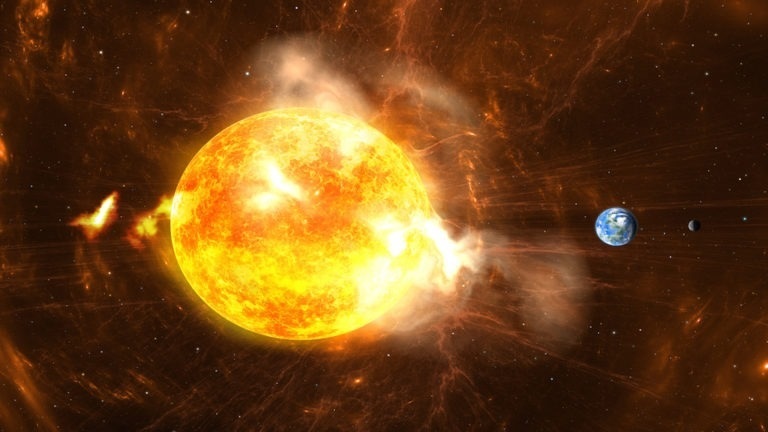Unearthing the Ancient Fury of Solar Storms: A Grim Warning for Modern Civilization

By Agnibeena Ghosh
In a chilling revelation, scientists have unraveled a harrowing episode in Earth’s history when our planet was struck by an extreme solar storm capable of cataclysmic consequences for contemporary human civilization. The profound warning comes from a surprising source—ancient tree rings discovered in the French Alps, which provided crucial evidence of a colossal surge in radiocarbon levels approximately 14,300 years ago. This dramatic spike, as it turns out, was the aftermath of the most massive solar storm ever recorded by scientists.
If a comparable solar storm were to occur today, experts caution that it could cripple the power grid, causing months-long blackouts and wreaking havoc on the infrastructure we rely on for communication. The findings have sounded alarm bells in the scientific community, with researchers emphasizing that we must heed the stark lessons from Earth’s past to prepare for future solar tempests.
“Extreme solar storms could have huge impacts on Earth. Such super storms could permanently damage the transformers in our electricity grids, resulting in huge and widespread blackouts lasting months,” warns Tim Heaton, a professor of applied statistics in the School of Mathematics at the University of Leeds. “They could also result in permanent damage to the satellites that we all rely on for navigation and telecommunication, leaving them unusable. They would also create severe radiation risks to astronauts.”
This recent revelation serves as a clarion call to embark on further research and take necessary precautions to protect our world from the potentially devastating consequences of future solar storms. Understanding the intricate mechanisms and potential triggers for such cosmic events is paramount to ensure our readiness.
Scientists have already identified nine extreme solar storms, referred to as Miayake Events, occurring within the past 15,000 years. Among them, the most recent events were documented in the years 993 AD and 774 AD. However, the newly discovered solar storm dwarfs them in terms of magnitude, being twice as powerful.
The investigation into these ancient solar storms unfolds like a gripping detective story, with clues hidden in the annals of time. Tree rings, known as dendrochronology, have long been used by scientists to study climate patterns and events. In this case, researchers examined these tree rings to discern a sudden spike in radiocarbon levels, which indicated a colossal burst of solar energy.
The implications of such a solar storm in the present day are profoundly unsettling. The world as we know it relies heavily on electricity grids that power everything from homes to industries. If transformers within these grids are severely damaged, the consequences could be catastrophic. The nightmare scenario of prolonged blackouts affecting not just individual households but entire regions would be a grim reality.
Furthermore, our modern way of life depends on a web of satellites that facilitate navigation, communication, and data transmission. A massive solar storm could irreparably harm these satellites, rendering them unusable and disrupting global networks.
A particularly disconcerting aspect is the potential threat to astronauts in space. Increased radiation risks during a solar storm could jeopardize the safety of those aboard spacecraft and space stations. Understanding and preparing for such eventualities are not only prudent but also a matter of utmost urgency.
The recent discovery of this colossal solar storm should serve as a powerful motivator for increased research and preparedness. As we navigate an increasingly technology-driven world, our dependence on electricity and satellites has grown exponentially. Mitigating the risks associated with solar storms is not just a matter of scientific interest; it’s a matter of safeguarding our way of life.






